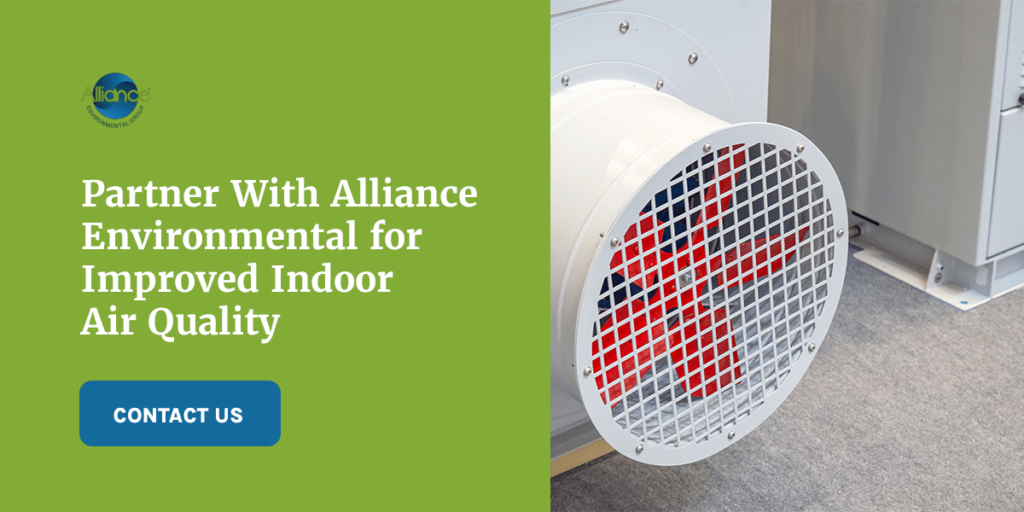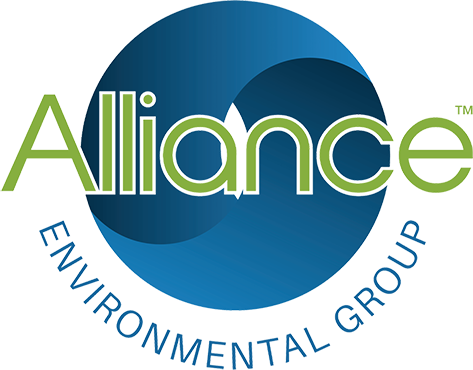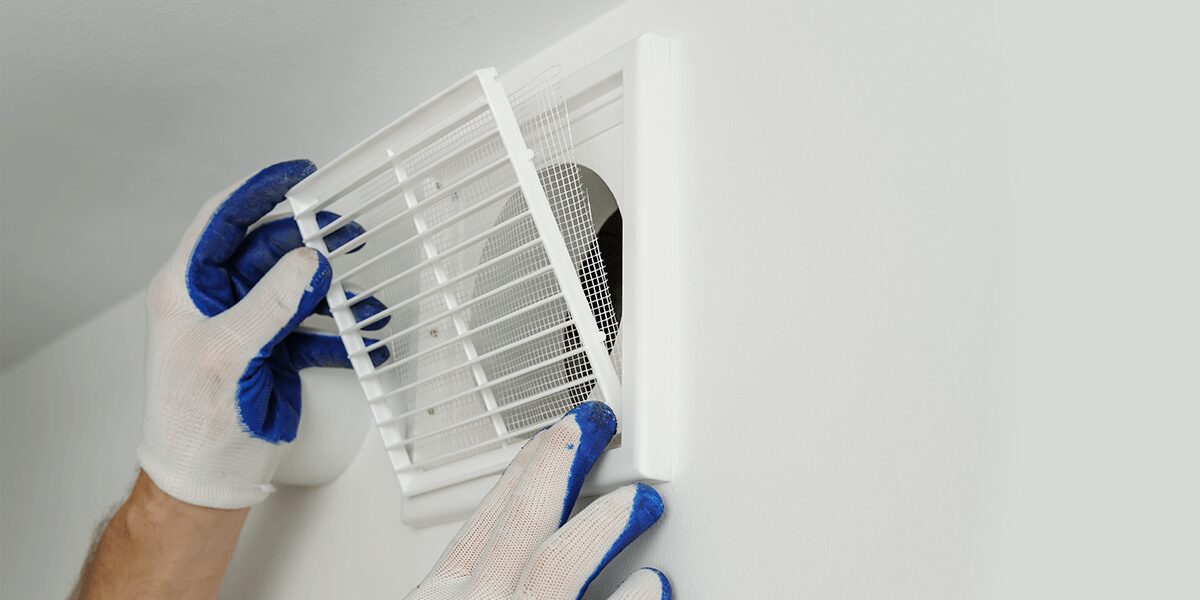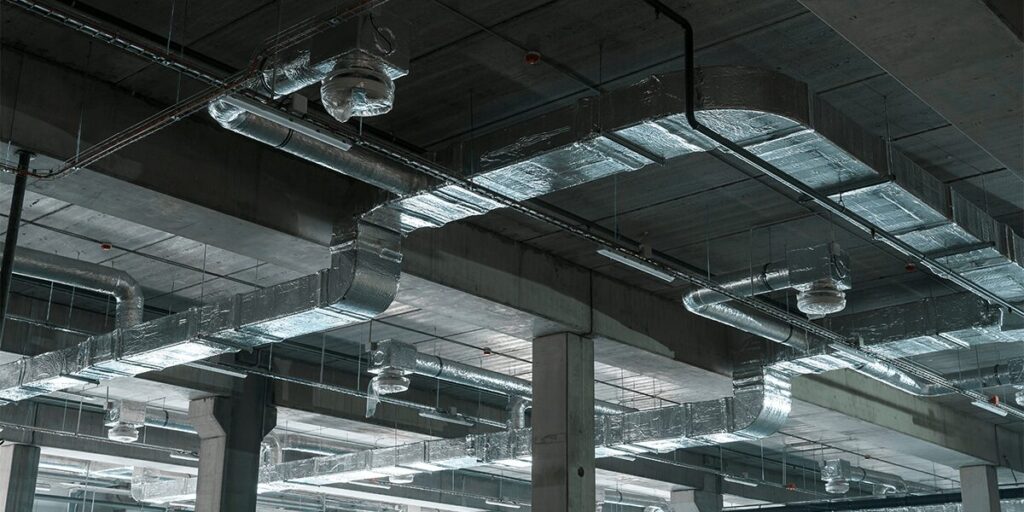
Several indoor air pollutants can pose health risks for your business. Building materials, air fresheners and fuel-burning appliances are all sources of air contamination. Anyone exposed to these pollutants for an extended period can experience health issues, and children, older adults and those with chronic illnesses are at an increased risk. In order to protect your customers and your business, you’ll want to take preventive measures to combat pollution and maintain healthy indoor air quality.
Indoor Air Pollution Causes
Volatile organic compounds (VOCs), particulate matter, carbon dioxide, sulfur dioxide, nitrous oxide, pollen and allergens are all pollutants that can contribute to poor indoor air quality. Here’s how people can come into contact with these pollutants:
- Building construction and furnishings: Many construction processes and products can make indoor air unhealthy. These can include VOCs found in carpets and paint. Others include asbestos, lead and formaldehyde found in some pressed wooden furniture, flooring and fabrics.
- Fuel-burning appliances: Cooking stoves, furnaces and water heaters can create emissions harmful to our health and the environment. These appliances might give off carbon monoxide, nitrogen dioxide and particulate matter. Wildfires can also contribute to emissions that enter buildings, causing us to breathe in toxic chemicals like lead and formaldehyde.
- Moisture and mold: Excessive moisture can lead to mold and promote bacteria growth. Flooding or leaving a window open during a storm can cause these issues.
- Human activities: Human activities can create indoor air pollution that can lead to poor health. For example, food waste can cause an insect infestation and contribute to allergens. Other examples include secondhand smoke and pet dander.
- Scents and chemicals: Various scents and products, including air fresheners and cleaning supplies, have chemicals that can be harmful to breathe.
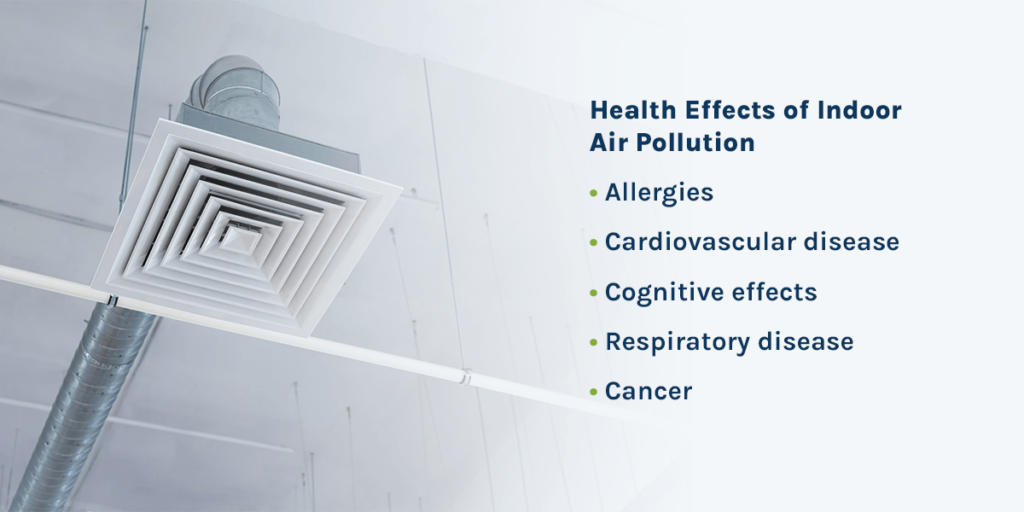
Health Effects of Indoor Air Pollution
Air pollution in commercial buildings can lead to several physical and mental health effects depending on a person’s age, underlying health and the location of the pollutant. Common short and long-term effects of indoor air pollution include:
- Allergies: Some air pollutants, like mold, dust and cockroaches, can lead to immediate health effects like allergies. Components of these allergens can lead to symptoms like headache, eye irritation, sinus congestion and dry throat.
- Cardiovascular disease: Research has found that for healthy adults, exposure to indoor pollutants was linked to increased blood platelets, which raise a person’s risk of clotting, stroke or heart attack.
- Cognitive effects: Studies show that exposure to air pollution is also associated with cognitive issues, which can range from impaired cognitive development in infancy to higher rates of dementia and cognitive decline later in life.
- Respiratory disease: Pollutants like mold can lead to respiratory disease and asthma. Exposure to indoor air pollution can also impact prenatal lung development, causing impaired lung function and an increased risk of pneumonia in an infant’s first year of life.
- Cancer: Long-term exposure to indoor air pollutants like secondhand smoke, arsenic and asbestos can increase a person’s risk of developing lung cancer.
8 Steps to Combat Indoor Air Pollution
Poor indoor air quality can have serious health effects on customers. Taking preventive measures can protect your bottom line and reduce the risk of insurance and legal issues. Follow these strategies to combat indoor air pollution in your commercial building:
1. Source Control
The first step to enhancing your indoor air quality is eliminating the sources of pollution. For instance, avoid using fixtures that contain asbestos or carpets that could introduce VOCs into the air. You can also modify your gas stoves to reduce the building’s emissions. Source control is also a cost-effective solution to maintaining indoor air quality since increased ventilation can increase your energy costs.
2. Increase Ventilation
Another strategy to decrease the concentrations of indoor air pollutants in your building is to boost the amount of outdoor air in your building. Open any windows that the weather, outdoor air quality and HVAC systems will permit. Employ cross-ventilation to get the best results by opening windows and doors at opposite sides of a room or in your building.
3. Change Your Air Filters
Your building’s air conditioning system keeps air flowing throughout your building. As a result, the overall condition of the ventilation system will determine your building’s air quality. Change out your air filters to prevent the ventilation systems from clogging up with pollutants and interrupting airflow. Maintaining your HVAC system properly can prevent contamination by dust and other air pollutants.
4. Keep Floors and Furniture Clean
Another simple way to minimize air pollutants in your building is by maintaining cleanliness. That way, you reduce the buildup of allergens that can lead to coughing, sneezing or coughing and contaminate the area and spread viral diseases. Start by cleaning and sanitizing the most commonly used items in your building, such as chairs, desks and other furniture, with a damp cloth and antiseptic solutions.
If your building has carpets, vacuum them at least twice weekly using a vacuum with a HEPA filter to remove allergens and dust.
5. Prohibit Indoor Smoking
Comprehensive smoke-free laws prohibiting smoking in indoor areas can drastically improve air quality and reduce exposure to secondhand smoke. Consider also banning tobacco and vaping with electronic cigarettes and other devices, which release harmful chemicals into the air.
6. Clean After Closing
While cleaning your building, many cleaning products can produce bothersome scents. To protect customers or residents, plan your cleaning and maintenance when fewer people are around, such as after closing the building down for the night. That way, you reduce the chances of someone coming into contact with air pollutants.
7. Try Air Purifiers and Dehumidifiers
You can assist in reducing contaminants and improving your building’s air quality through air purification. Using an air filter for your HVAC system can keep particles from entering your vents and decontaminating the air. You’ll find different types of air purifiers that can address your facility’s unique issue. Additionally, using a dehumidifier can help you remove moisture from the air and prevent the health effects of mold and water.
8. Seek Professional HVAC Services
The best way to improve your building’s air quality is by scheduling regular HVAC services. Professionals have the experience, knowledge and specialty tools to combat air pollutants and ensure your building’s ventilation system operates correctly. They can change air filters properly and monitor your building’s air quality to ensure it is at a safe level.
Partner With Alliance Environmental for Improved Indoor Air Quality
With many mental and physical health effects of indoor air pollution, it’s crucial that you take proactive measures to safeguard your building occupants’ health. If you need a reliable partner to achieve cleaner and healthier indoor air, Alliance Environmental can assist you.
We offer various solutions tailored to your specific needs, including HVAC system maintenance and cleaning, installation and repairs, and infection control services to help you maintain healthy indoor air.
To learn more about our services, request a quote or call us at (877) 798-2240 today.
